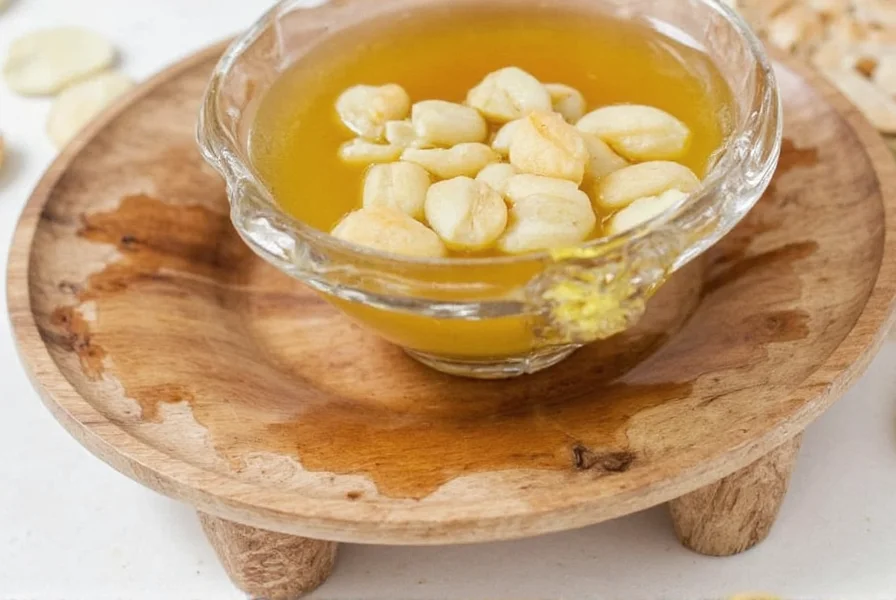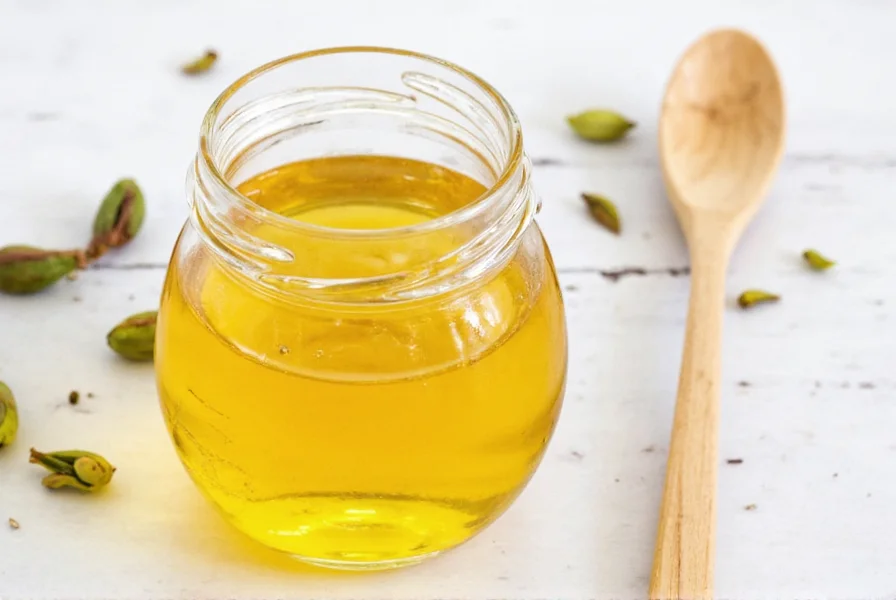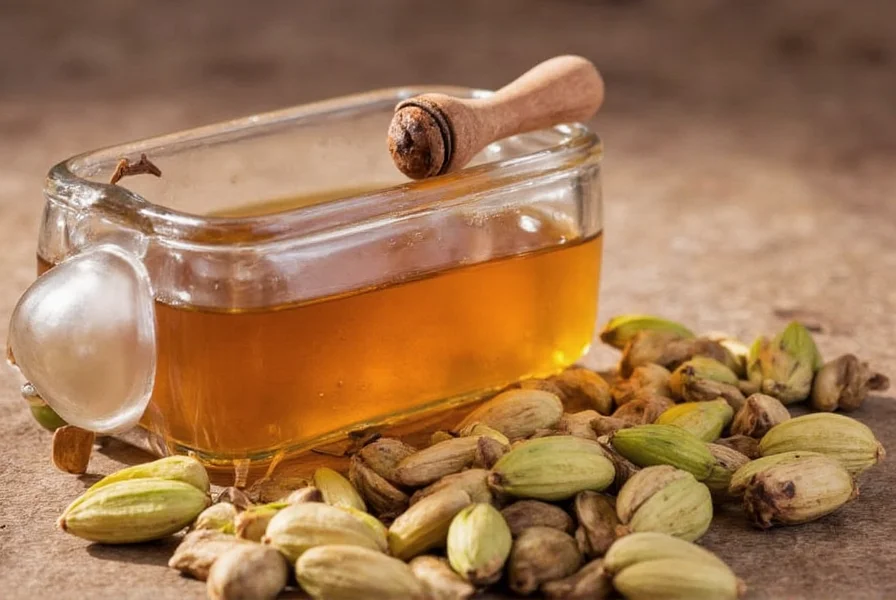Cardamom syrup transforms ordinary beverages and dishes with its complex, warm flavor profile. This Middle Eastern and Scandinavian staple has gained global popularity as mixologists and home cooks discover its remarkable versatility. Unlike artificial flavorings, real cardamom syrup captures the nuanced essence of this ancient spice, adding depth to both sweet and savory applications.
What Exactly Is Cardamom Syrup?
Cardamom syrup represents a concentrated infusion of cardamom flavor in a sweetened base. The syrup captures the essential oils and aromatic compounds from cardamom pods through a gentle simmering process. Green cardamom (Elettaria cardamomum) provides the most desirable floral notes, while black cardamom offers a smokier profile better suited for savory dishes.
The magic happens when the cardamom's volatile oils dissolve into the sugar-water mixture. This extraction method preserves the spice's delicate flavor compounds that would otherwise evaporate during cooking. The resulting syrup maintains cardamom's signature citrusy, eucalyptus-like notes with subtle hints of mint and lemon.

Why Cardamom Syrup Deserves a Place in Your Pantry
Cardamom syrup offers several advantages over using whole or ground cardamom:
- Consistent flavor distribution - The syrup ensures even flavor throughout beverages and recipes
- Extended shelf life - Properly stored syrup lasts weeks compared to ground cardamom's months
- Enhanced solubility - Sugar base helps the flavor integrate smoothly into cold beverages
- Flavor preservation - Captures volatile compounds that evaporate when cardamom is dry-heated
Professional bartenders particularly value cardamom syrup for crafting balanced cocktails where precise flavor control matters. The syrup's sweetness level can be adjusted to complement other ingredients without overpowering the delicate cardamom notes.
Perfect Homemade Cardamom Syrup Recipe
Creating exceptional cardamom syrup requires attention to detail. Follow this professional-grade recipe for optimal results:
| Ingredient | Measurement | Preparation Notes |
|---|---|---|
| Green cardamom pods | 10-12 pods | Fresh, high-quality pods with intact husks |
| Granulated sugar | 1 cup | Organic cane sugar preferred |
| Filtered water | 1 cup | Spring water enhances clarity |
| Lemon zest | 1 strip (2" x 1/4") | Optional for brighter flavor |
Step-by-Step Preparation
- Gently crush cardamom pods with the flat side of a knife to release essential oils
- Combine all ingredients in a small saucepan over medium heat
- Bring to a gentle simmer (do not boil vigorously)
- Reduce heat to low and simmer uncovered for 15-20 minutes
- Remove from heat and let steep for 30 minutes
- Strain through a fine-mesh sieve, pressing gently on solids
- Cool completely before transferring to storage container
The ideal cardamom syrup should have a delicate golden hue and a balanced flavor that's aromatic without being overpowering. For stronger flavor, increase steeping time but avoid extended cooking which can create bitter notes.

Creative Applications for Cardamom Syrup
Move beyond basic uses with these professional applications:
In Beverages
- Add 15-30ml to coffee or tea for an aromatic twist
- Substitute for simple syrup in Old Fashioneds and Martinis
- Mix with sparkling water for refreshing cardamom soda
- Enhance hot chocolate with 10ml for Middle Eastern flair
In Baking and Desserts
- Brush over cakes before frosting for infused moisture
- Mix into whipped cream for cardamom-infused topping
- Add to fruit compotes for sophisticated flavor dimension
- Drizzle over pancakes or waffles as gourmet alternative to maple syrup
Savory Applications
- Glaze for roasted carrots or sweet potatoes
- Base for Middle Eastern-inspired salad dressings
- Add complexity to braising liquids for meats
- Enhance fruit salsas for fish or poultry dishes
Storage Guidelines for Maximum Freshness
Proper storage determines your homemade cardamom syrup's shelf life and quality preservation:
- Always use sterilized glass containers with airtight seals
- Refrigerate immediately after cooling to room temperature
- Consume within 2-3 weeks for optimal flavor (up to 4 weeks maximum)
- Freeze in ice cube trays for longer storage (up to 6 months)
Watch for these signs of spoilage: cloudiness beyond normal infusion haze, surface mold, fermented smell, or separation that doesn't remix with gentle shaking. When in doubt, discard the syrup.
Troubleshooting Common Cardamom Syrup Issues
Even experienced makers encounter these challenges:
Weak Flavor
If your syrup lacks sufficient cardamom character, try these solutions:
- Crush pods more thoroughly before infusion
- Extend steeping time by 15-30 minutes after cooking
- Increase cardamom quantity by 25-50%
- Add a pinch of baking soda to help extract flavor compounds
Overpowering Flavor
When cardamom dominates other elements:
- Dilute with additional simple syrup (1:1 sugar-water)
- Add citrus zest during infusion to balance intensity
- Use younger, fresher cardamom pods which have milder flavor
- Reduce steeping time in future batches
Cloudiness or Sediment
Natural cloudiness occurs from spice particles. For clearer syrup:
- Double-strain through cheesecloth after initial straining
- Avoid boiling which extracts more plant material
- Let syrup settle overnight before decanting clear portion
Frequently Asked Questions
Can I use ground cardamom instead of pods for syrup?
While possible, ground cardamom creates cloudy syrup with sediment. Whole pods provide cleaner extraction and better flavor control. If using ground cardamom, use 1 teaspoon per cup of syrup and double-strain through cheesecloth. Expect slightly different flavor profile as ground spice loses volatile compounds faster.
How does cardamom syrup differ from cardamom extract?
Cardamom syrup combines sweetness with flavor in a water-based solution, making it ideal for beverages where sugar and flavor are both needed. Cardamom extract uses alcohol as a solvent, concentrating flavor without sweetness. Syrup integrates better into cold drinks while extract works better in baking where additional liquid isn't desirable.
What's the ideal cardamom to sugar ratio for syrup?
The standard 1:1 sugar-to-water ratio works best for versatility. For cardamom quantity, use 10-12 green cardamom pods per cup of liquid. Adjust to taste based on cardamom freshness and personal preference. Older cardamom may require 25% more pods to achieve the same flavor intensity as fresh pods.
Can cardamom syrup be used in place of simple syrup?
Yes, cardamom syrup substitutes directly for simple syrup in most applications, adding both sweetness and distinctive flavor. When replacing simple syrup in recipes, consider reducing other flavor components to maintain balance. In cocktails, start with 25% less cardamom syrup than simple syrup would require, then adjust to taste.
Does cardamom syrup offer any health benefits?
Cardamom contains antioxidants and may support digestion, but the syrup's sugar content means these potential benefits come with significant calories. The syrup primarily serves as a flavoring agent rather than a health supplement. For potential digestive benefits, use sparingly in herbal teas rather than sugary cocktails.











 浙公网安备
33010002000092号
浙公网安备
33010002000092号 浙B2-20120091-4
浙B2-20120091-4